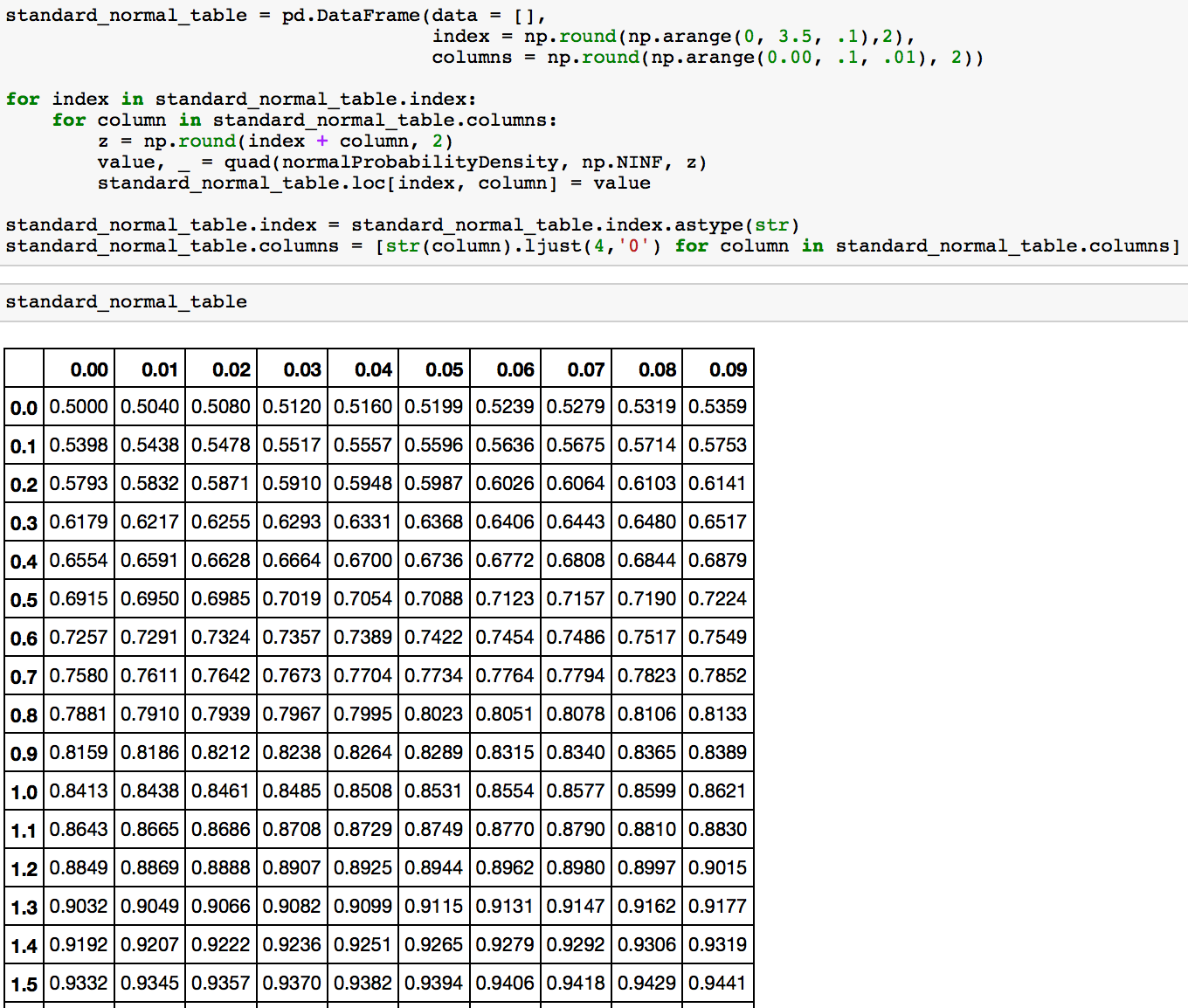

#Full standard normal table plus#
There is that 0.003, so the z-value is just a little to the right, 1.28 plus a little. The position of 0.1003 corresponds to (along the left column) the first two digits of 1.2 and (in the column) to the third digit of x.x8. In the CRE Primer table, that would be 0.1003 and 0.0985. Scan the internal of the table to find values that encompass the value 0.10. Let’s say we want to find the z-value corresponding to the right tail (shaded area) corresponding to 10% of the total area under the curve.ĭivide by 100 to remove the percentage, thus working with the decimal fraction of the area (a value between zero and one). Given an area, find the corresponding z-value. Therefore, let’s say we have a z-value of 1.21.įrist find 1.2 along the left-hand column, then move to the right to the column representing the third digit of interest, in this case, x.x1, to find in the body of the table, 0.1131. Many standard normal tables provide the first two digits along the vertical axis and the third digit along the horizontal axis. With a z-value, you are ready to enter the table.

There is only one curve, the standard normal curve.Īll that you need to find the area under the curve (probability) is to determine the z-value of interest. Unlike other distributions, the standard normal distribution does not have different values for specific degrees of freedom. Then compare my drawing to the image on the table and sort out the appropriate actions to take to determine the desired value. I often will draw a normal curve and shade the area of interest to solve the problem. Given the symmetry of the distribution, we just multiply the negative z-value by minus one, use the table to find a value. Most tables, that I know about, provide probabilities (area under the curve) only for positive z-values. Thus one minute the value from the table provides our desired result. If instead, we wanted the value to the left, we can use the properties that the area under the curve is equal to one. The table provides the probability represented by the area to the right of the z-value. The results end up being the same using the symmetry and other properties of the standard normal distribution.įor example, in the case where we’re using the CRE Primer table and calculate a z-value. And, the table may be to the left or the right of the mean. Some tables have the area to the left of the z-value, some have the area from the mean to the z-value. In the CRE Primer, Appendix X Table III the graphic shows a complete normal curve with the shading of the tail to the right of the z value. What changes is which area the author provides. Often that shaded area is the value provided in the body of the table for a specific z-value.Īs you know, for a given z-value, or distance from the mean in units of standard deviation, the area under the curve or probability is determined. If you noticed, and you should have, there almost always is a small normal curve associated with the table. It seems every author has to create a unique way to tabulate the values. Writing this short how-to article would be really easy if there were only one way to create the table. One of the most basic skills needed for the CRE exam is the ability to correctly read the Standard Normal Table. 5-day Reliability Black Belt ® Live Course.5-day Reliability Green Belt ® Live Course.Root Cause Analysis and the 8D Corrective Action Process course.

An Introduction to Reliability Engineering.Reliability Analysis Methods online course.14 Ways to Acquire Reliability Engineering Knowledge.Reliability Engineering Management DRAFT.Innovative Thinking in Reliability and Durability.Equipment Risk and Reliability in Downhole Applications.Musings on Reliability and Maintenance Topics.Metals Engineering and Product Reliability.Product Development and Process Improvement.Rooted in Reliability: The Plant Performance Podcast.


 0 kommentar(er)
0 kommentar(er)
